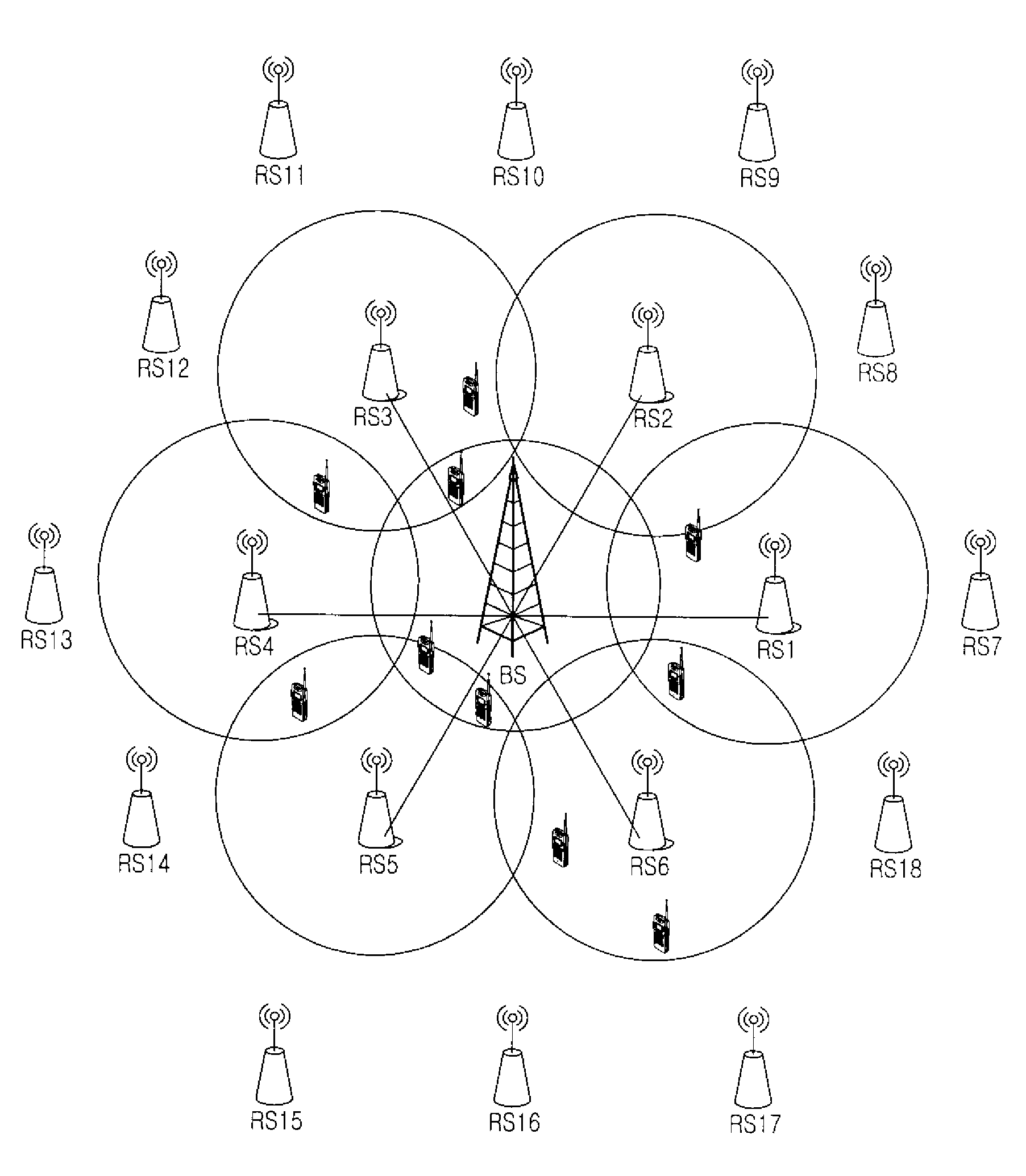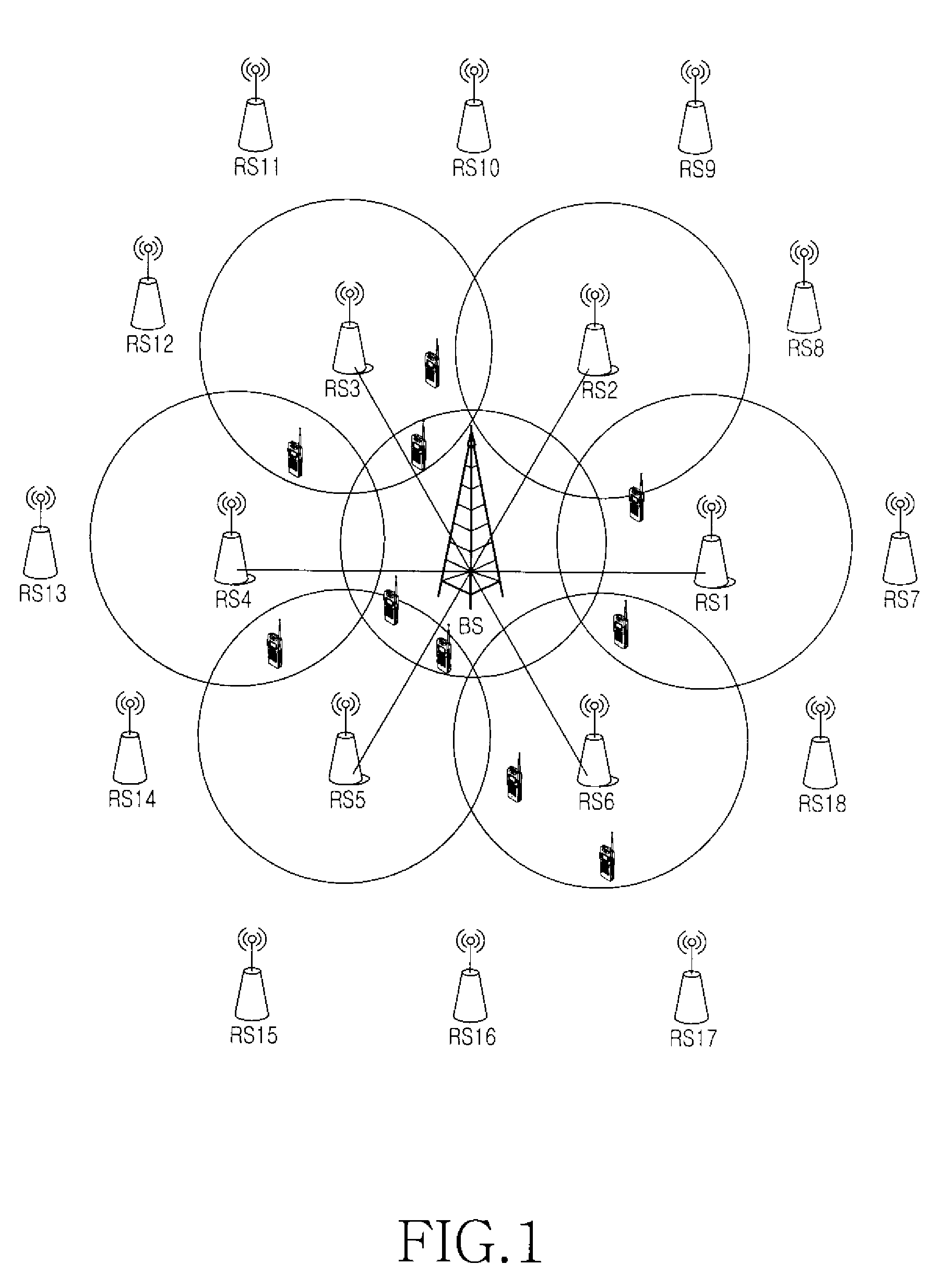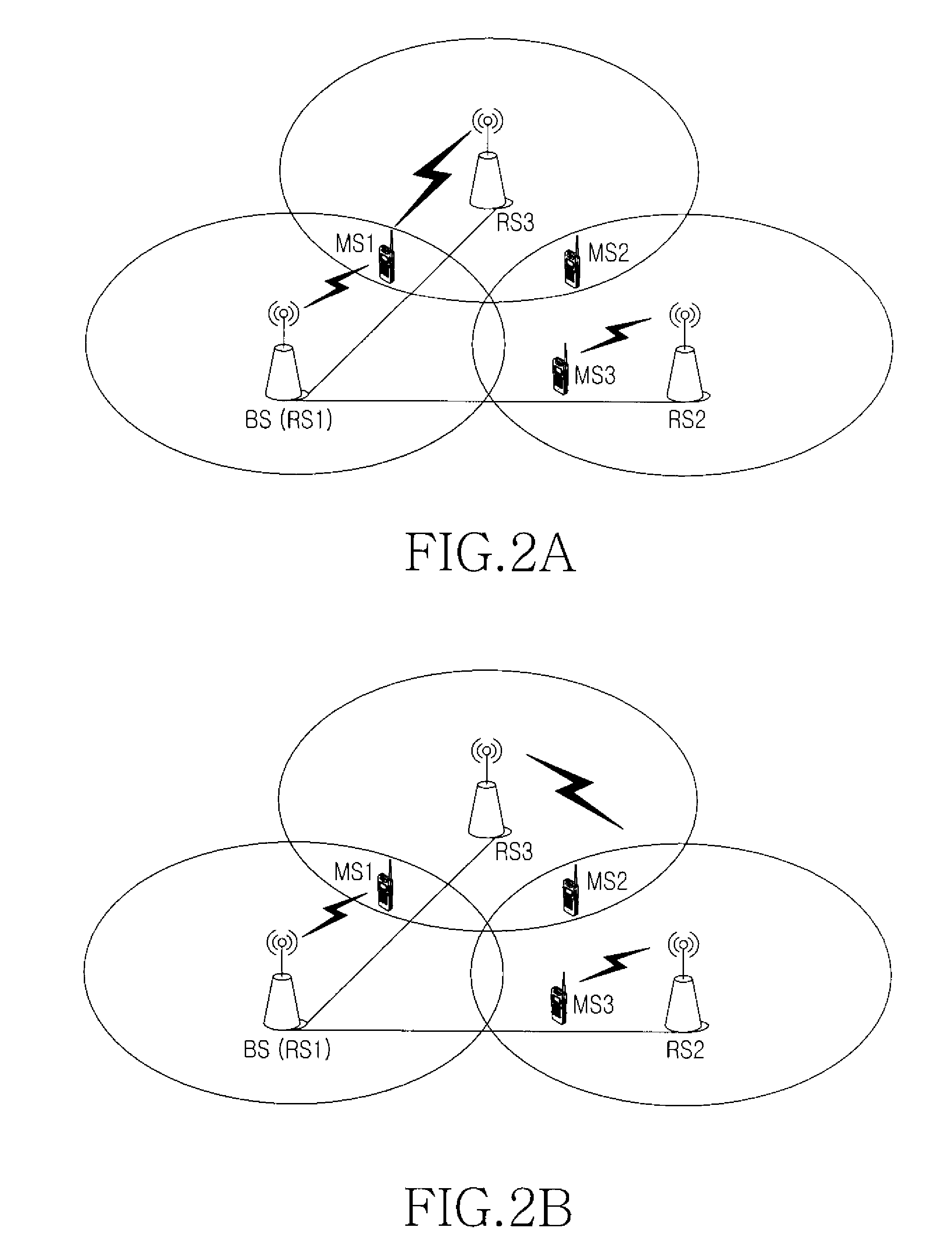Signal combining apparatus satisfying maximum transmission capacity in cellular system employing distributed antennas and resource allocation method using the same
- Summary
- Abstract
- Description
- Claims
- Application Information
AI Technical Summary
Benefits of technology
Problems solved by technology
Method used
Image
Examples
Embodiment Construction
[0025]Exemplary embodiments of the present invention are described in detail with reference to the accompanying drawings. Particulars found in the following description of the present invention, such as specific configuration elements, etc., are provided to provide a comprehensive understanding of the present invention, and it would be obvious to those skilled in the art that various changes in form and details may be made in the particulars without departing from the spirit and scope of the invention. For the purposes of clarity and simplicity, a detailed description of known functions and configurations incorporated herein are omitted as it may make the subject matter of the present invention rather unclear.
[0026]As described above, the existing cellular system using distributed antennas employs the soft hand-off scheme using the SINR-based condition for determining signal combining. However, in terms of the entire cell, the soft hand-off scheme doesn't ensure the maximum system t...
PUM
 Login to View More
Login to View More Abstract
Description
Claims
Application Information
 Login to View More
Login to View More - R&D
- Intellectual Property
- Life Sciences
- Materials
- Tech Scout
- Unparalleled Data Quality
- Higher Quality Content
- 60% Fewer Hallucinations
Browse by: Latest US Patents, China's latest patents, Technical Efficacy Thesaurus, Application Domain, Technology Topic, Popular Technical Reports.
© 2025 PatSnap. All rights reserved.Legal|Privacy policy|Modern Slavery Act Transparency Statement|Sitemap|About US| Contact US: help@patsnap.com



